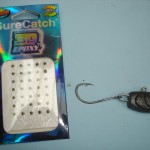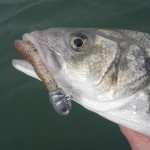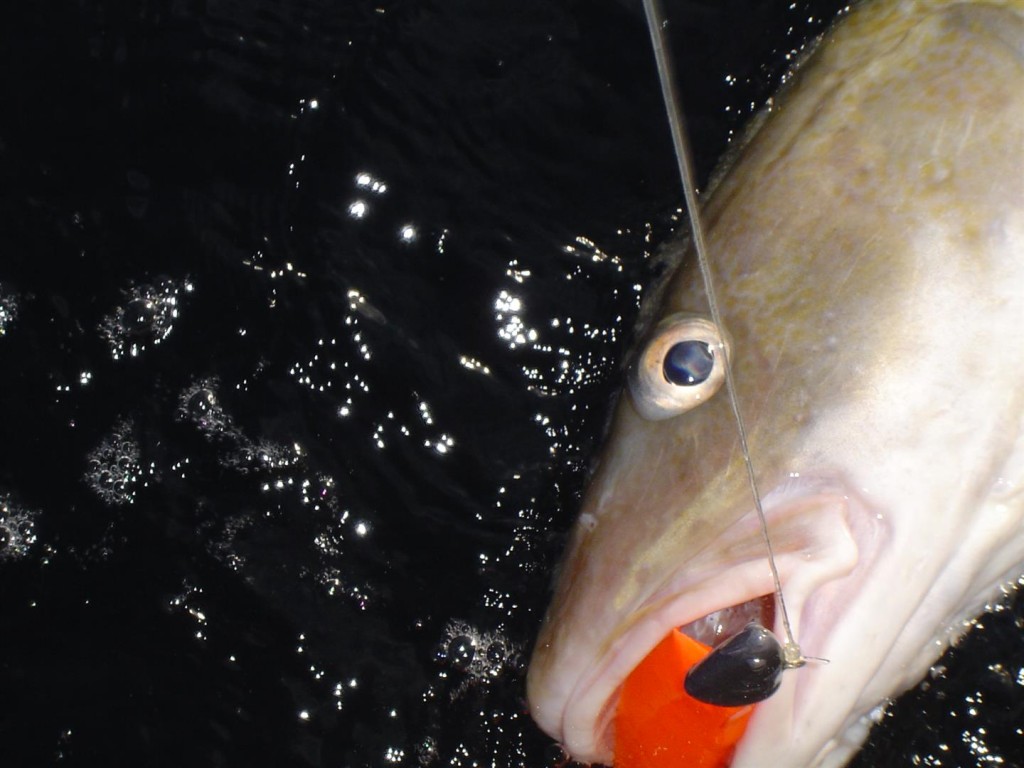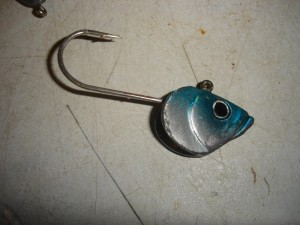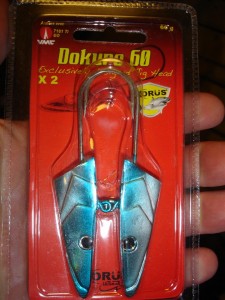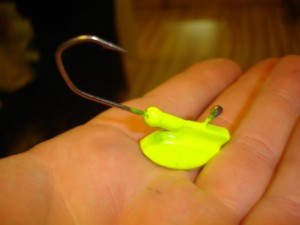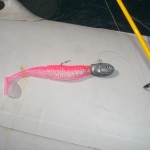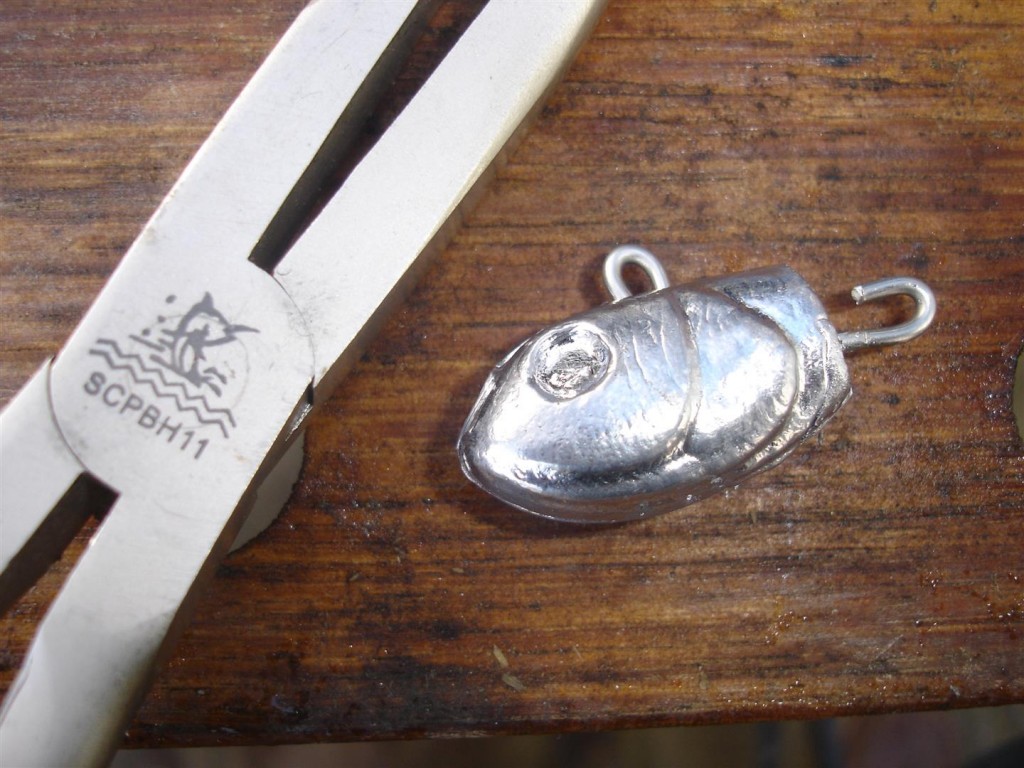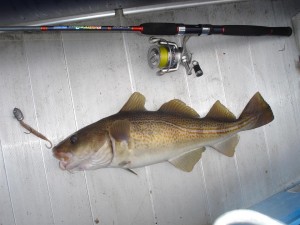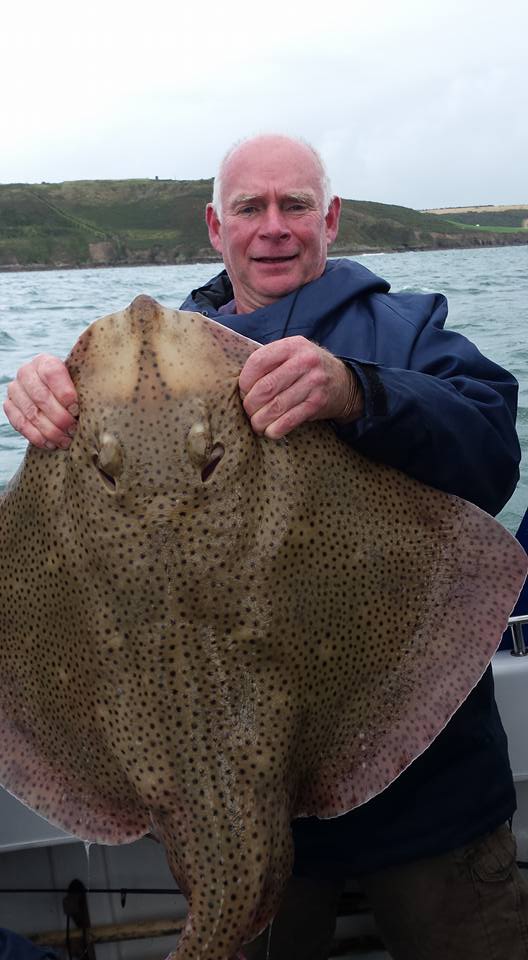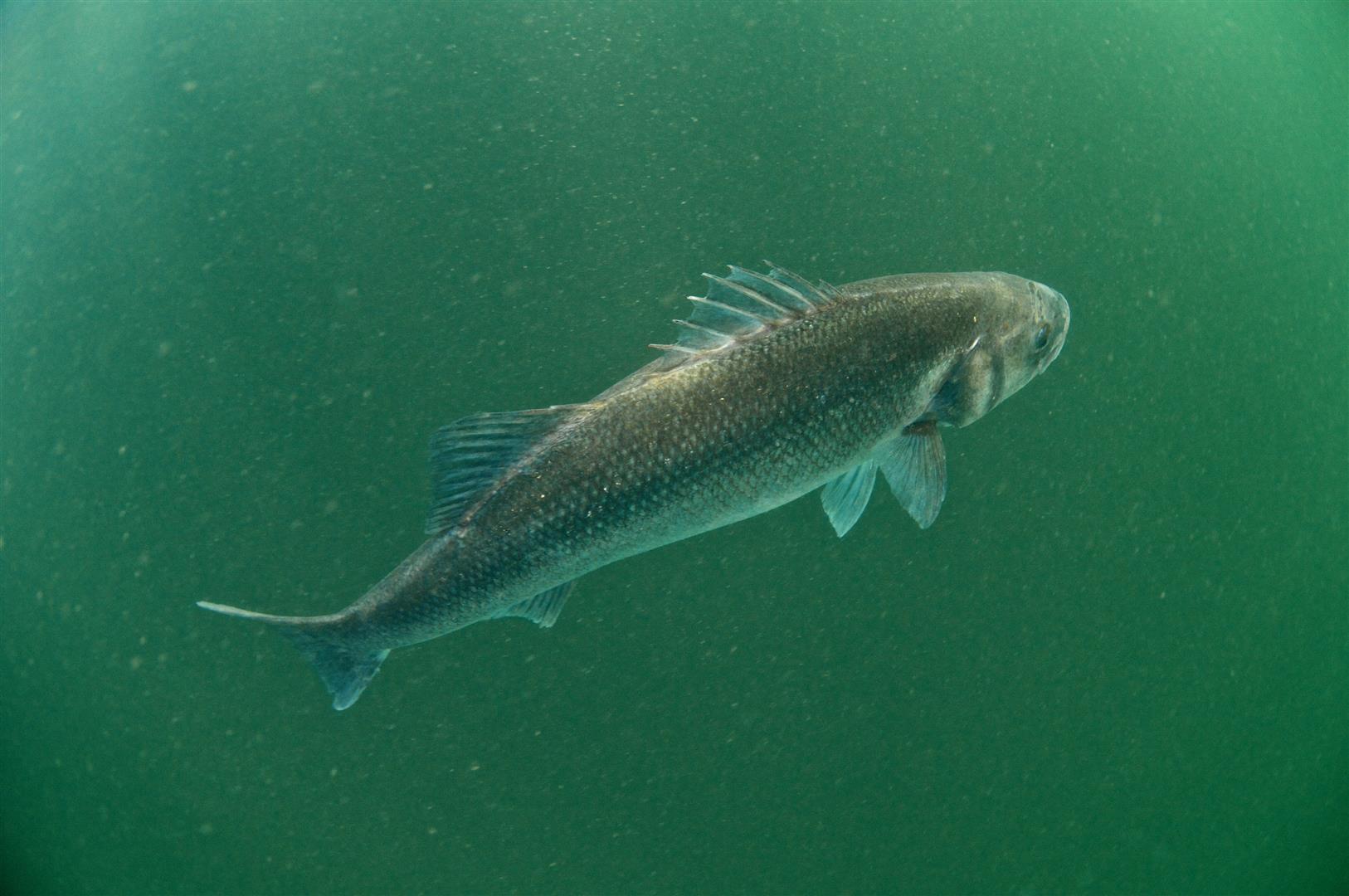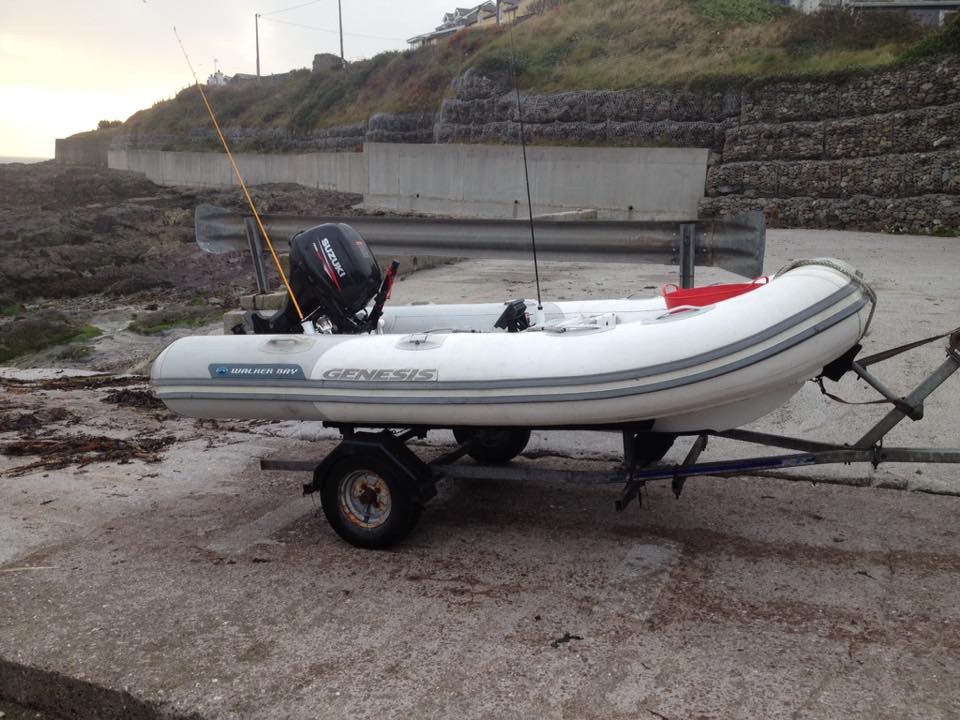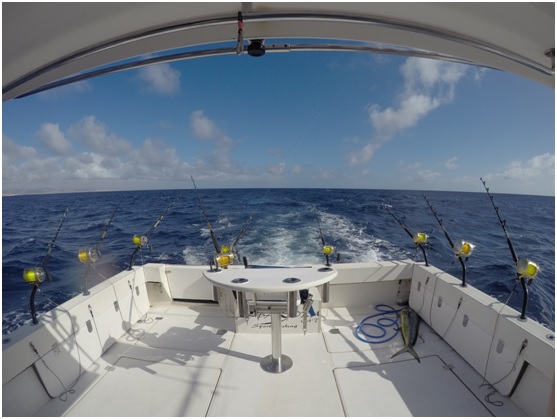* It’s all in your head!
Think back to the way you used fish ten years ago, do you still fish the same way? Do you still use the same gear? Go back even further and you will probably find the changes in the game are even more dramatic. I remember having to order my first eight pound class boat rod; such rods were never kept in stock. The tackle shop owner had trouble stifling his grin as I waved the catalogue in front of him, “sure what would you want that little thing for, there’s not even roller eyes on it!” Before that it was an uptider that caused consternation. Time moves on and so does fishing. More than twenty years ago my father took a holiday in Oregon. While visiting relations he gathered as much information about the boat fishing scene on the Pacific coast of the states. The information, the literature and the tackle he brought home with him were to be seen to be believed. He brought home an array of soft plastic baits and jig-heads that were fabulous looking but I could not figure out how I was ever going to use these lures. More than twenty years later I now have a box of similar lures. I recently caught cod on a twenty five year old jig-head!
You could not blame the average Irish angler for struggling to get to grips with jig-heads. Our rods were not really suitable. Line technology has moved at tremendous pace we have moved from almost exclusive mono to hi tech monos and superb braided lines. Even the humble jig-head has evolved from being a rudimentary “lump of lead” to being a multifunction attachment for various style lures. Some of these jig-heads are a thing of beauty but they are functional as well. Did you ever think you would open your tackle box and select a style jig-head to suit the area that you are fishing and the lure you are attaching? Did you ever think that there would be other considerations other than the weight of the jig you plan to use?
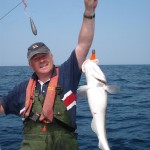
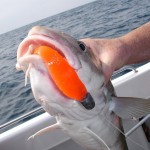
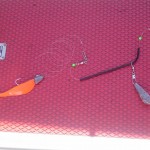 The setup – Flying Collar Rig & jighead
The setup – Flying Collar Rig & jigheadI have used jig-heads for years. There is something really exciting about dropping a shad down over the side of a shipwreck and winding like crazy. While wreck fishing I will still use my usual system: a flying collar rig with a shad connected to the snood. More often the shad is the “built-in-jig” type like the ubiquitous “storm” shad; however one of the most successful shads I have ever used is the “Fishtek” flouro orange shad. This shad is unweighted and so a jig-head will help with presentation and help prevent tangles. It would be great to be able to connect directly to the jig-head and use the lure this way, without the boom and lead, but when you are dealing with depths up to four hundred feet you will find yourself loosing that “connection” with the lure as it descends to the depths. There just is not enough weight. I have had success with Power jigs, bladed pirks rigged with an assist hook, but not as much success as with the flying collar rig but I think this more to do with the rods we use.
As each month passes by I am learning new techniques and tricks with my lures. The ultimate aim for all this experimentation is to catch more fish and to have more fun while catching them. There is no doubt that once you begin to catch a few fish on jig-heads you will appreciate the sport and thrill to be got from taking decent sized fish on light but powerful tackle.
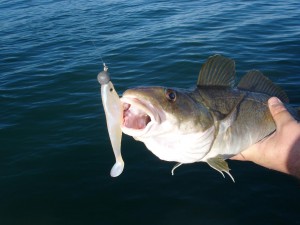
Ball Heads
These are by far the most popular and widely available jig-heads available. They are available in a huge range of sizes from a couple of grams to a few ounces. These simple leads are where most anglers start from as most tackle shops stock a few different sizes. Most Ball Heads are made with a straight hook and have a barb and collar to retain the soft plastic bait. This barb and collar is a feature of many styles of jig-head but it must be considered somewhat of a moveable feast, or should that be a removable feast! When you are using very small plastic lures it might be better to remove the barb and collar all together in order to get the most possible movement from your lure. I haven’t spotted that many Ball Heads over two ounces so they will be best used for inshore work rather than plumbing the greater depths. The Rugby Ball or Football Head as the yanks would call it is a variation on a theme where the ball is oval shaped and inclined to one side of the lure. The idea here is the head should bounce more easily over rocks and tend to get caught up less. Also when the lure is left on the bottom the lure tends to point upwards.
Profiled Heads
Profiled jig-heads were somewhat of a rarity on our shores until recently. There are some mad variations available out there and many are very good at what they do – putting more movement into a lure. It is a simple exercise in hydrodynamics: A wing or profiled shape will dart through the water in a more random manner than a straight forward ball. There is an array of different shapes available and each will impart a different action when jigged. The position of the eye on the jig will also have a bearing on the action of the lure when it is jigged. Most jigs are rigged with the eye not on the front of the lure like your average plug but on top where the effect of jigging will send the lure off in darting motion.
Streamlined Heads
When you get out into deeper water the speed which you jig sinks is critical. It is important to get your lure to the bottom as fast as possible. There are many designs that will help the passage of your lure through the water faster than a standard ball head. You may notice that many streamlined heads do not have a barb & collar to help hold on the shad or lure. I like these style jigs as I feel the barb can sometimes split the lure. You will notice that in every soft plastic fisherman’s tackle box will be a copious amount of superglue and a sharp scissors. These tools are there to allow you to trim the lure to suit your leadhead and the superglue holds the lure to the head perfectly. You will often see lure anglers working a couple of lures ahead. All they are doing is giving the glue time to set before using the lures in anger. You will be limited by your rod in the size jig-head you can use. If you are going to fish using a light but powerful rod you will probably find that a seventy gram head is about as heavy as you can go. Any heavier and the rod begins to buckle and the fun goes from the fishing. The trick is to find the rod that suits your location. I am using two different rods at present. Both are around seven feet and both are in the 7-30 gram rating. Both rods will handle the heavier jig-heads, just, and both are equally happy with jig-heads all the way down to a few grams. You will soon spot a rod that is out gunned by the weight of the jig-head – the rod tip will bend too much and it will be hard to impart movement into the lure.
Pop-up Heads
These are interesting heads. The design is really for the guys that want to experiment with bouncing soft plastics across the bottom. When left to rest on the bottom theses heads will tend to sit upright on their base and will point the lure towards the surface. Thus small fish lures will look as if they are trying to bury themselves and crab-like lures will adopt a defensive position. I have little experience with these style heads but have seen them put to great use. Another project for this year!
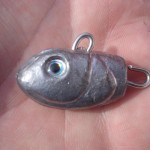 Articulated Head
Articulated Head
I would keep my favourite till last. I love the action that an articulated jig-head gives to a lure. Your standard head has a hook moulded into the head. With an articulated head the hook and therefore the bait are free to pivot around the head. The action from this setup has to be seen to be believed as you impart action to the lure via the rod tip. The added bonus of the articulated head is that the hooks used are standard hooks. You can vary hook size and pattern simply while using the same head. The same heads can be rigged “weedless” or in a “normal” configuration. A few years back I began to make my own articulated heads. It was a necessity that was largely forced on me as I could not get a good supply of reasonably priced articulated jigs in this country. There are many expensive jigs on the market but when you are learning the technique you will surely loose plenty heads, as I have! Somehow it seems to hurt less when you lose the homemade lures! I had not moulded any lead in years but soon found that the old skills return quickly. I purchased a mould from Bricoleurre in France. It makes articulated heads from 70gram to 25gram, a selection that will suit my deep and shallow water fishing. Once you get used to bending the stainless steel wire for the jigs the process becomes an easy one. As you would expect all this work is done outdoors in well ventilated conditions. Once the jigs cool you can then trim off any excess lead and then finish the process by bending the hook link. There are endless variations as you can add eyes to the lures and paint them if you wish.
There are even more different style jig-heads available than those above but these are the most popular that I have encountered. The scene is evolving all the time and more and more different lures arrive to market. It is really a matter of investigating and experimenting to see which types of jig-head and lures suit your area and the species you are targeting. It would be great to recommend that using jig-heads was as simple as tackling up on your normal spinning rod and working away. I tried that at the outset but soon found that you really need a stiffer, faster action rod to get the most from the lure. We have discussed these rods before. They are more through actioned than a jerk-bait rod, designed to get the most out of jig-heads and plugs. Your standard ten-foot spinning rod has a more through action and it will work hard at giving that life-like jerk to the lure. You might get lucky and catch some fish; you might find a lure fished like a spinner works well in your area but ideally you need to use different techniques for different target species. It used be the case that these rods were hard to come by in this country but not anymore. More and more retailers are stocking suitable gear as more anglers expand their repertoire.
Pollack are a great species to begin with for experimentation. You will use more traditional techniques to target these spirited fish. A fast sinking head of up to 70 grams teamed with a lure of your choosing will set the ball rolling. Drop the lure to the bottom, you may get a take on the drop, once you feel the head strike the bottom jerk the rod tip vigorously. Wind in a few turns and jerk again. Vary the intensity of your jerking – tap, reel, tap-tap, reel, tap – after about thirty turns, if you don’t have a lively pollack swinging off your line drop back down and try again. Experiment with different style lures until you find the one that will be most attractive to the fish. If you manage to attract the interest of a double figure pollack it will be a fish you will never forget. Remember you are fishing with a seven foot wand in the 10-30 gram range!
When targeting cod and wrasse it is important to keep you lure in the action area. Drop down as light a head as you can, just heavy enough so you can feel the bottom. As you drift keep the head in the action area and impart some animation to the lure. Lift the rod tip- tap, tap tap- drop to the bottom and make sure you can still feel the bounce of the sea floor. Repeat the process until you feel a bite. The same techniques will catch bass in areas where there is strong drift. There is one important point to remember – you may have to strike your fish when using this technique. Often the fish will not take with the some vigour as when hitting say a pug or spinner. This style fishing has more in common with bait fishing than “gilling”. When you feel the take strike briskly and bend into the fish. Then hold on as all hell breaks loose.
I cannot understate the fun and satisfaction that is to be got from this style fishing. The craic is great and the fights are more memorable. In the time we live in where the bigger fish are scare, using jig-heads and light rods puts a different slant on the fishing. While the odds are still in favour of the angler the lighter gear tends to give the fish a chance to express itself. Smaller fish give a better account of themselves and larger fish will give you fodder for endless stories at the bar! My light lure rods are always aboard SKUA. I still love my bait fishing but it is becoming irresistible each day I am on the water not to have a dabble with some jig-heads and soft plastics. I get the idea that there is not a fish that I currently catch on bait that will not succumb to a lure offered on a suitable jig-head fished in the correct manner. The possibilities are almost endless and don’t get me started on the Madai-Jig! A summer of experimentation awaits…
(This article appeared in Irish Angler in 2011)
